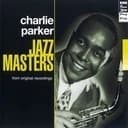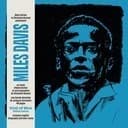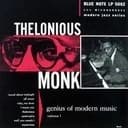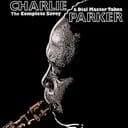Formula, Intervals, and Symmetrical Structure
The B whole-half-diminished scale follows a precise interval formula of W-H-W-H-W-H-W-H, or 2-1-2-1-2-1-2-1 semitones, creating an eight-note octatonic structure with complete symmetry. This symmetrical pattern repeats every minor third (three semitones), meaning that only three unique whole-half-diminished scales exist in Western music—each transposing to four different keys at minor third intervals. For example, the B whole-half-diminished scale (B-C♯-D-E-F-G-G♯-A♯) produces the same pitch collection as D, F, and G♯ whole-half-diminished scales, just starting from different points in the sequence. This mathematical property makes the scale incredibly efficient for jazz musicians, as mastering three scale patterns provides access to all twelve keys.
The intervallic structure of the B whole-half-diminished scale creates a complex harmonic palette that includes both altered and unaltered extensions simultaneously. From the root B, the scale contains the root (1), major second (2), minor third (♭3), perfect fourth (4), diminished fifth/augmented fourth (♭5), minor sixth (♭6), major sixth (6), and major seventh (7). When applied over a B dominant seventh chord, this scale provides access to the altered tensions ♭9, ♯9, ♯11, and 13, making it ideal for creating sophisticated dominant chord voicings and improvisational lines. The symmetrical nature of the scale produces four diminished seventh chords within its structure, contributing to its characteristic sound of controlled tension and chromatic movement.
Application in Jazz Improvisation Over Dominant 7th Chords
The B whole-half-diminished scale serves as a primary improvisational tool for jazz pianists navigating B dominant 7th chords with altered tensions, particularly in situations where maximum harmonic color and tension are desired. Unlike the B bebop dominant scale, which maintains a more consonant Mixolydian character, the whole-half-diminished scale introduces significant chromaticism and harmonic ambiguity. Jazz musicians typically employ this scale over B dominant 7th chords functioning as V chords in minor keys, dominant 7♯9 chords, dominant 7♭9 chords, and dominant chords with ♯11 or ♭13 alterations. In classic jazz standards and bebop compositions, the whole-half-diminished scale creates the sophisticated harmonic language heard in the playing of Thelonious Monk, Bud Powell, and later modern jazz pianists like Herbie Hancock and McCoy Tyner.
In practical application, jazz improvisers often alternate between the B whole-half-diminished scale and more consonant dominant scales like B Mixolydian or B bebop dominant, using the diminished scale to create moments of heightened tension before resolving to more stable harmonic territory. The scale excels in creating classic bebop devices including chromatic enclosures, approach notes, and digital patterns that outline altered dominant chord tones. Advanced jazz musicians combine the whole-half-diminished scale with diminished chord arpeggios, altered dominant voicings, and tritone substitutions to build complex harmonic progressions characteristic of modern jazz vocabulary. The scale's symmetrical structure also facilitates pattern-based improvisation, where a single melodic motif can be transposed in minor thirds to create cohesive improvisational sequences.
Practice Techniques and Fingering Strategies
Effective piano practice of the B whole-half-diminished scale requires systematic fingering patterns that accommodate the scale's unusual interval structure. For right hand ascending practice starting from B, use the fingering: 1(B)-2(C♯)-3(D)-1(E)-2(F)-3(G)-1(G♯)-2(A♯)-3(B), repositioning the thumb after the third finger to maintain smooth execution. Left hand ascending practice should use: 2(B)-1(C♯)-3(D)-2(E)-1(F)-3(G)-2(G♯)-1(A♯)-3(B), ensuring fluid thumb crossings and hand position shifts. Because the whole-half-diminished scale doesn't conform to traditional major or minor scale fingering patterns, developing muscle memory through slow, deliberate practice is essential before attempting faster tempos.
Rhythmic and harmonic awareness forms the foundation of effective whole-half-diminished scale practice. Begin by practicing the scale over a sustained B dominant 7th chord or backing track, listening carefully to how each scale degree creates tension and resolution against the underlying harmony. Practice emphasizing different notes within the scale to highlight chord tones (root, third, fifth, seventh) versus alterations (♭9, ♯9, ♯11, 13), developing sensitivity to the scale's complex harmonic colors. Work through the scale in various rhythmic groupings—triplets, sixteenth notes, quintuplets—and practice connecting it to resolution tones in the target major or minor key. Advanced practice involves exploring the scale's symmetrical properties by practicing melodic patterns that transpose at minor third intervals, reinforcing the relationship between the scale's four transpositions while building improvisational vocabulary.
Relationships to Other Scales and Harmonic Context
The B whole-half-diminished scale shares a profound relationship with the B half-whole-diminished scale, which reverses the interval pattern to H-W-H-W-H-W-H-W. While both scales contain eight notes and share the same symmetrical properties, they serve contrasting harmonic functions: the whole-half-diminished scale works over dominant 7th chords, while the half-whole-diminished scale functions over fully diminished 7th chords. Understanding this complementary relationship helps jazz pianists navigate diminished harmony comprehensively, switching between these octatonic scales as chord qualities change within progressions. Both scales contain identical pitch content when starting from roots a whole step apart, creating interesting theoretical connections that advanced improvisers exploit for seamless chromatic voice leading.
The B whole-half-diminished scale relates to the B Mixolydian mode and B bebop dominant scale as alternative dominant scale choices, each offering different levels of tension and harmonic complexity. While Mixolydian provides a consonant, diatonic approach to dominant harmony and bebop dominant adds a single chromatic passing tone, the whole-half-diminished scale introduces significant altered tensions, making it the most harmonically complex option. Jazz musicians develop fluency across all dominant scale options—Mixolydian, bebop dominant, altered scale, whole-tone, and whole-half-diminished—learning to select the appropriate scale based on harmonic context, chord voicing, melodic direction, and desired level of tension. This comprehensive approach to dominant scale vocabulary allows for sophisticated improvisation that responds dynamically to the evolving harmonic landscape of jazz compositions.





